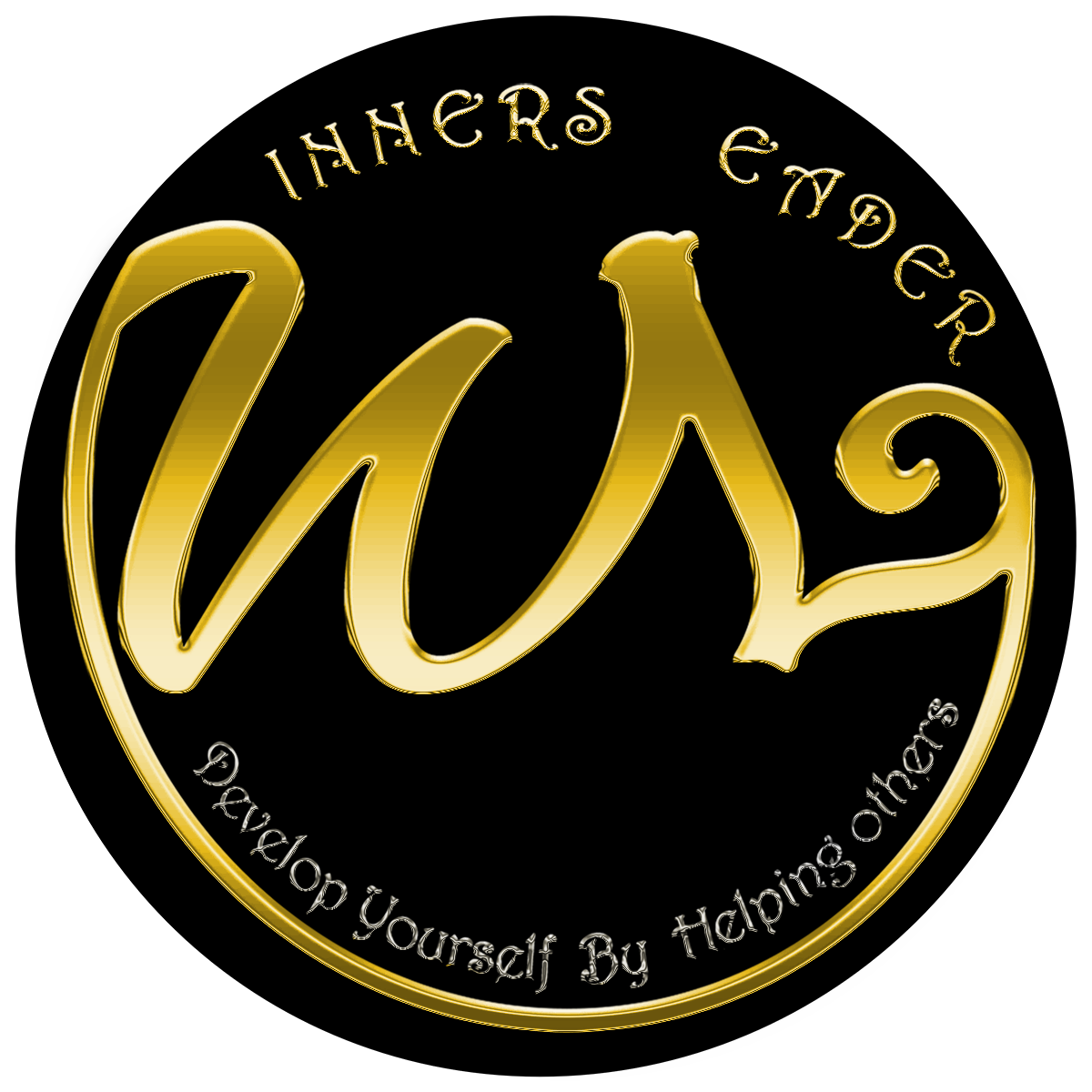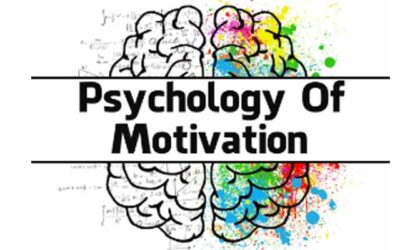We can define motivation as the desires, needs, and interests that arouse or activate an organism and direct it toward a specific goal. It can either steam from internal or external sources or from the interaction of both. For example, desire for food or sex steams from internal biological needs. On the other hand, the desire for social recognition or honor steams from external sources. But sometimes it can be steamed from the interaction of both external and internal sources. For example, if someone feel need for food, this comes from his internal drives. But by what type of food he wants to meet the hunger totally depends on his choice. That means it came from external source.
We can define motivation as the desires, needs, and interests that arouse or activate an organism and direct it toward a specific goal. It can either steam from internal or external sources or from the interaction of both. For example, desire for food or sex steams from internal biological needs. On the other hand, the desire for social recognition or honor steams from external sources. But sometimes it can be steamed from the interaction of both external and internal sources. For example, if someone feel need for food, this comes from his internal drives. But by what type of food he wants to meet the hunger totally depends on his choice. That means it came from external source.
Human beings engage in various types of activities and there is motivation on behind of all these actions. For example: a man is striving for getting a job, a student is studying his books for getting a good result, a person is eating meal and so on. Behind all these actions, there is a reaction that compels that person to do certain action-that is called motivation. The aim of getting high marks is a motivation for the student. Similarly, the aim of earning money is a motivation for the man and that’s why the man is striving for getting a job.
Motivation And Motives
Though we think that motivation and motives are the same term and use them interchangeably, that is not right. They are related but they don’t have the same meaning. Motivation is the psychological phenomenon that is any kind of general behavior and motive is the concrete reason for taking any action. There are three types of motives. They are: biological motives, social motives and personal motives.
Motivation Cycle
Motivation cycle is a transition of states within an organism that energizes the organism toward the satisfaction of a particular need. Motivation itself is considered a hypothesized state. Therapists utilize the idea of need to portray the persuasive properties of conduct.
Four different states comprise motivation which takes place in an organism to drive him towards each action. Because of a particular need each action is first initiated. The need drives the person into taking actions. Due to the action positive results causes later action acts as an incentive motivating a person towards the goal. But nobody stop after achieving certain goals, another goal is targeted then and this phenomenon continues on and on. This phenomenon has been termed as Motivational Cycle.
Need
Need is known as a need or shortfall of some need which ought to be satisfied by doing objective errand. It’s a condition of physical hardship that causes pressure inside a life form. The pressure caused when the living being is denied of essential necessities of life as food, water, and rest, makes the interior condition of a life form be imbalanced. The awkwardness brought about by the need excites the living being to keep up its equalization. Need is the primary condition or invigorating element for any objective coordinated conduct.
Drive
Need prompts drive, which is the second step towards accomplishing objective. Drive can be characterized as the condition of strain or excitement delivered by need. The drive can likewise be considered as the first wellspring of vitality that enacts a life form. For example, when a living being is eager and additionally parched, the life form looks to decrease this drive by eating or potentially drinking.
Drive goes about as a solid industrious improvement to push a life form towards its objective. It is the condition of uplifted strain prompting fretful action and preliminary conduct.
Incentive
The impetus hypothesis lays on the presumption that individuals are persuaded by a drive for motivations and support. The carrying on creature thinks well about his activities and the outcomes that will be gotten from that activity. The hypothesis additionally comprehends impetuses as the inspiration that rouse an individual to accomplish a specific objective item. The inspired conduct is guided towards motivating force and drawing nearer to the impetus gives fulfillment of the stirred drive.
For instance: conduct like drinking water is an impetus that decreases the thrist of the individual brought about by the need to satisfy his drive. The decrease of conduct at that point causes balance in a living being .
As per Hilgard, the motivator is something in the outside condition that fulfills the need and therefore diminishes the drive through consummative movement.
Goal
The goal of any motivated behavior is the reduction of tension in the body can be considered as goal. For example: When a man becomes hungry, that man eats food, and his body restores to a balanced condition and thus reduces the tension. This reduction of tension causes of an energized activity that is called goal. When the goal has been completed, the organism is again ready for another goal-motivated behavior.
Goals can be both positive or negative. Positive goals are that types of goals where an organism tries to attain, such as sexual companionship, food, victory etc. Negative goals are the opposite of positive goals that can be understood by an organism trying to escape from or avoid, such as embarrassing situations, punishments.
Types of Motivation
There are two types of motivation. They are intrinsic motivation and extrinsic motivation.
1. Intrinsic motivation: In this type of motivation, motives originate from inside the body of organisms. Internal driving state stimulates an individual to behave in a particular way. A wide range of organic drives, for example, hunger, thirst, rest, alleviation from torment, temperature guideline remembers for it.
2. Extrinsic motivation: In this type of motivation, motives originate from inside the body of organisms. The driving force outside the body stimulate the organism to behave or to do certain action. It incorporates impetuses, rewards, stipends, advancement and downgrade, prizes and disciplines. Other types of motivation-Positive and negative incentives.
Theories of Motivation
No single motivation theory can explain all aspects of people’s motives and there are also many theorist who explained their theory differently. Each theoretical explanation can serve as the basis for the development of techniques for motivating a person. There are many theories of motivation. They are-
Hierarchy of Needs Theory
Abraham Maslow’s chain of command of necessities is the most popular hypothesis of inspiration. He identified five needs in human-being. The original five needs in human-beings are:
1. Physiological Needs: Physiological needs includes hunger, thirst, shelter, sex, and other bodily needs.
2. Safety-security Needs: Security and protection from physical and emotional harm and ensuring safety from any kinds of threats.
3. Social-belongingness Needs: This includes affection, belongingness, acceptance, and friendship.
4. Esteem Needs: There are two factors of self-esteem. They are internal factors and external factors. Inside components, for example, confidence, accomplishment and outer factors, for example, status, acknowledgment.
5. Self-actualization Needs: Drive to become what we are capable of becoming; includes growth, achieving our potential, and self-fulfillment, the highest level of need hierarchy pyramid.
According to Maslow, after satisfying one need, the next become dominant. When you want to motivate someone, you need to understand what level of the hierarchy that person is currently on and focus on satisfying needs at or above that level. Maslow’s theory received long-standing wide recognition. It is intuitively logical and easy to understand and there are many research that has validated it.
McClelland’s Theory of Needs
Achievement
All people have a need David McClelland gave a theory of motivation built on this work in his 1961 book, “The Achieving Society. There are three needs in all people. They are a need for achievement, a need for affiliation, and a need for power. Different people have different characteristics depending on their dominant motivator.
According to McClelland, these motivators are learned and that is why it is called the Learned Needs Theory.
Achievement
People motivated by achievement work very effectively either alone or with other high achievers to achieve their goal.
When providing feedback, they give achievers a fair appraisal. They want to know whether they’re doing right – and wrong – so that they can improve.
Affiliation
People motivated by affiliation work best in a group environment, so that they can try to integrate them with a team (versus working alone). When providing feedback, they give feedback the person personally.
Power
Those with a high need for power work best when they’re in charge and try to achieve their goal by hook or by crook.
Goal-Setting Theory
The goal-setting theory explains that specific and difficult goals, with feedback,help us do our best performance. Goal setting helps us to develop an action plan that motivates and guides a person or group toward achieving a certain goal. Edwin A. Locke and his partners have demonstrated that more explicit and yearning objectives lead us to more execution improvement than simple or general objectives. Goal setting is the set of activities that is followed to achieve something. In goal-setting theory, proposed by Edwin Locke, he reveals the impressive effects of goal specificity, challenge, and feedback on performance. When goals are difficult, a rson tries to perform their best to achieve his goals. Small and easy goals narrow one’s performance.
Goal settings can be affected by outcomes in four major ways. They are:
Choice
When settling on decision, objectives can thin somebody’s consideration and direct them toward objective important exercises and forward them objective insignificant activities.
Effort
To achieve goal someone becomes more effortful. For example, if someone usually can do 10 maths per hour but wants to do 15 maths per hour, then they may work harder to produce more widgets than without that goal.
Persistence
Because of goal someone become more willing to work through setbacks.
Cognition
Goals helps someone to develop and change their behavior according to their goal.
Equity Theory
A theory that says that individuals are motivated by fairness. According to this theory, one compare one’s job inputs and outcomes with those of others and then respond to eliminate any inequities because they want equality in all aspects. According to this equity theory, employees who perceive inequity will make one of six choices:
1. Change inputs (if one underpaid, he will give less effort or if overpaid, will give more effort).
2. Change outcomes (one who gets reward on doing a math, he will do more maths then).
3. Distort perceptions about one’s ownself (“I used to think that I am not that much good in psychology, but now I realize I work a lot harder than everyone else do”).
4. Mutilate view of others (“One imagines that others work isn’t as attractive as the method of that individual’s reasoning”).
5. Pick an alternate referent (“I am not in the same class as my sibling in doing craftsmanship, however I’m showing improvement over salim”).
6. Leave the field (quit the job by leaving the workplace).
Organizational Justice
Organizational justice composed of distributive, procedural, informational, and interpersonal justice in the workplace.
Distributive Justice
Distribution should be equal in the workplace so that nobody can question about fairness. So, in this way perceived fairness of the amount and allocation of rewards among individuals should be ensured. Example: I got the promotion that I deserved.
Procedural Justice
The perceived fairness of the process should be maintained by distributing the rewards equally in the organization. Example: Eid Bonuses is given equally among the employees.
Interactional Justice
Perceived degree to which one is treated with dignity and respect and this should be ensured for everyone in the organization. Example: At the time of talking with my boss, when telling him about my raise, he was very nice and complimentary.
Model of organizational Justice
Expectancy Theory
Victor H. Vroom (1964) characterizes inspiration as a procedure administering decisions among elective types of deliberate exercises, a procedure constrained by the person. In 1964, Victor Vroom gave hope hypothesis. This hypothesis clarifies that the quality of an inclination to act with a particular goal in mind relies upon the quality of a desire that the demonstration will be trailed by a given result.
Victor Vroom’s expectancy theory of motivation is most widely used theory of motivation. Although there are many criticisms of this theory has been made, most of the theory evidence supports the theory. Expectancy theory suggests that the way of acting in a certain way depends on the strength of our expectation of a given outcome and its attractiveness.
In reasonable terms, representatives will be propelled to work and apply a significant level of exertion when they accept that it will prompt a decent exhibition examination and that will prompt hierarchical rewards, for example, pay increments as well as inherent prizes, and that the prizes will fulfill their own objectives. The hypothesis, centers around three connections:
1. Exertion execution relationship: The individual saw that applying a given measure of exertion will prompt execution.
2. Execution reward relationship: how much the individual performs, will prompt the achievement of an ideal result.
3. Prizes individual objectives relationship: how much hierarchical prizes fulfill a person’s very own objectives or needs and the allure of that compensations for the person.
Motivation vs. Emotion
Although, motivation and emotion are intrinsically linked, they are two fundamentally different things. Motivation describes the desires, wants or needs that direct a person to behave in a particular way toward a goal; in contrast, an emotion is a subjective state of being that can be described as a feeling. Emotion and motivation both influence behavior and they also lead us to take action. Emotion acts as a motivator. For example, the emotion of fear can motivate a person from the object that fears him. while the emotion of happiness motivate a person to be more productive on a project that reinforces that emotion continue the act that makes him happy.
Conclusion
Motivation is an important issue for reaching at a certain goal. Motivation plays an important role in all sphere of life. Motivation energizes organism to act in a certain way and to become goal- oriented. In organization it is necessary to motivate employees to achieve the goal. It is also important in educational sectors too.
References
- https://en.wikipedia.org/wiki/Motivation
- https://www.studyandexam.com/motivation-meaning-types.html
- https://www.verywellmind.com/what-is-motivation-2795378
- https://www.mindtools.com/pages/article/herzberg-motivators-hygiene-factors.htm
- https://courses.lumenlearning.com/wmintrobusiness/chapter/reading-two-factor-theor
- https://quizlet.com/60522957/management-chapter-17-flash-cards/#:~:text=Social%20needs%20are%20a%20person’s,status%2C%20recognition%2C%20and%20attention.




